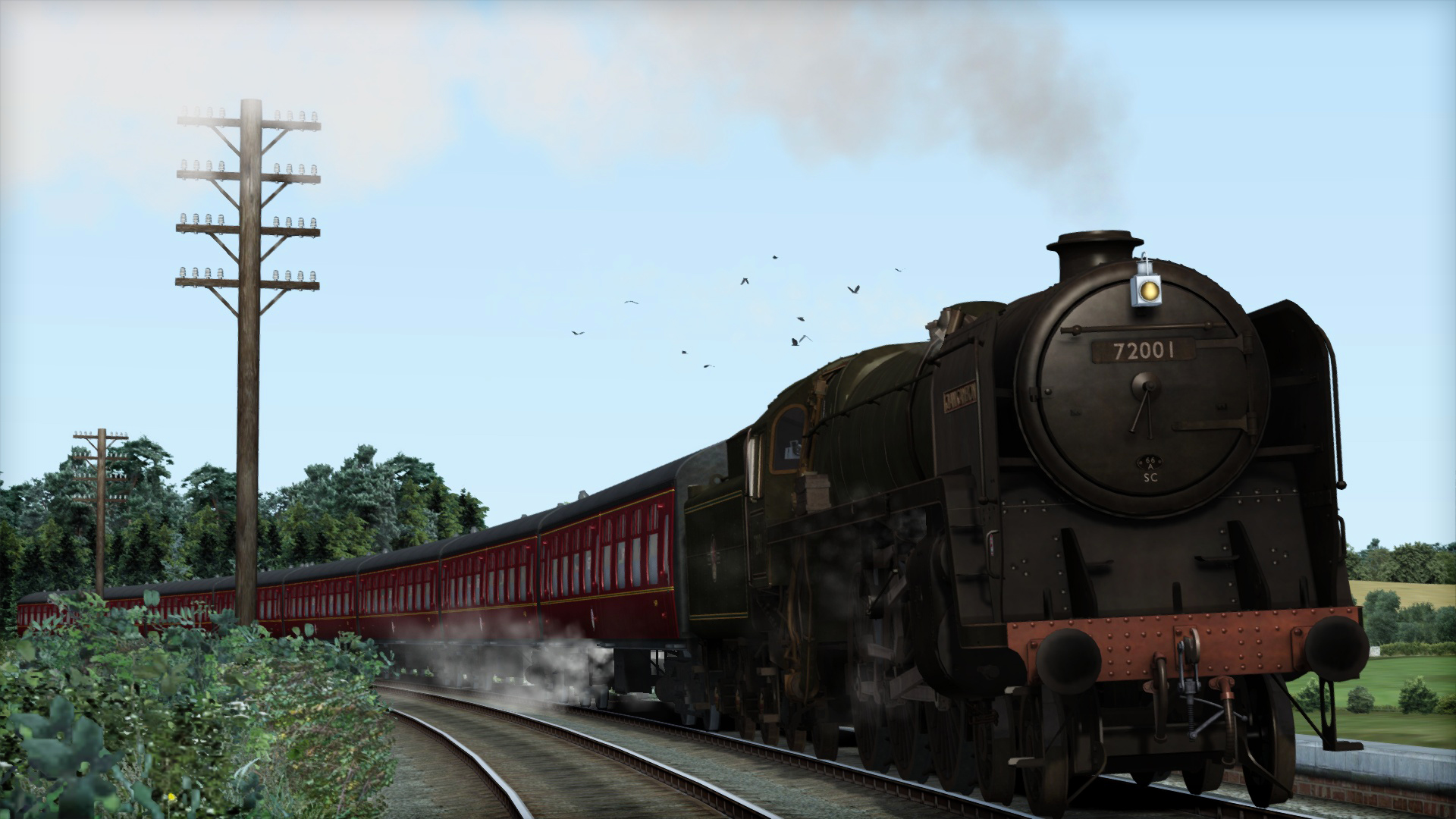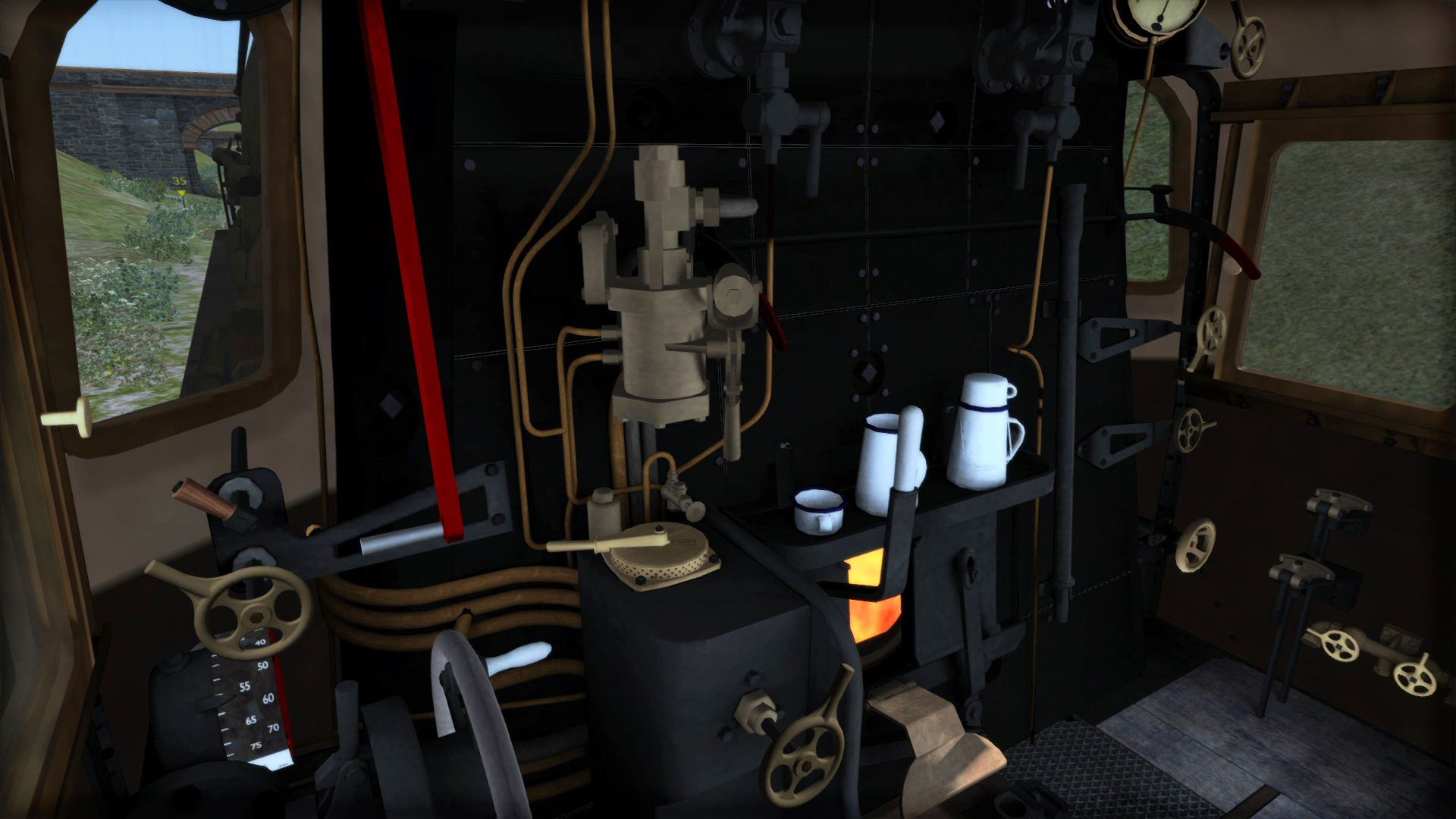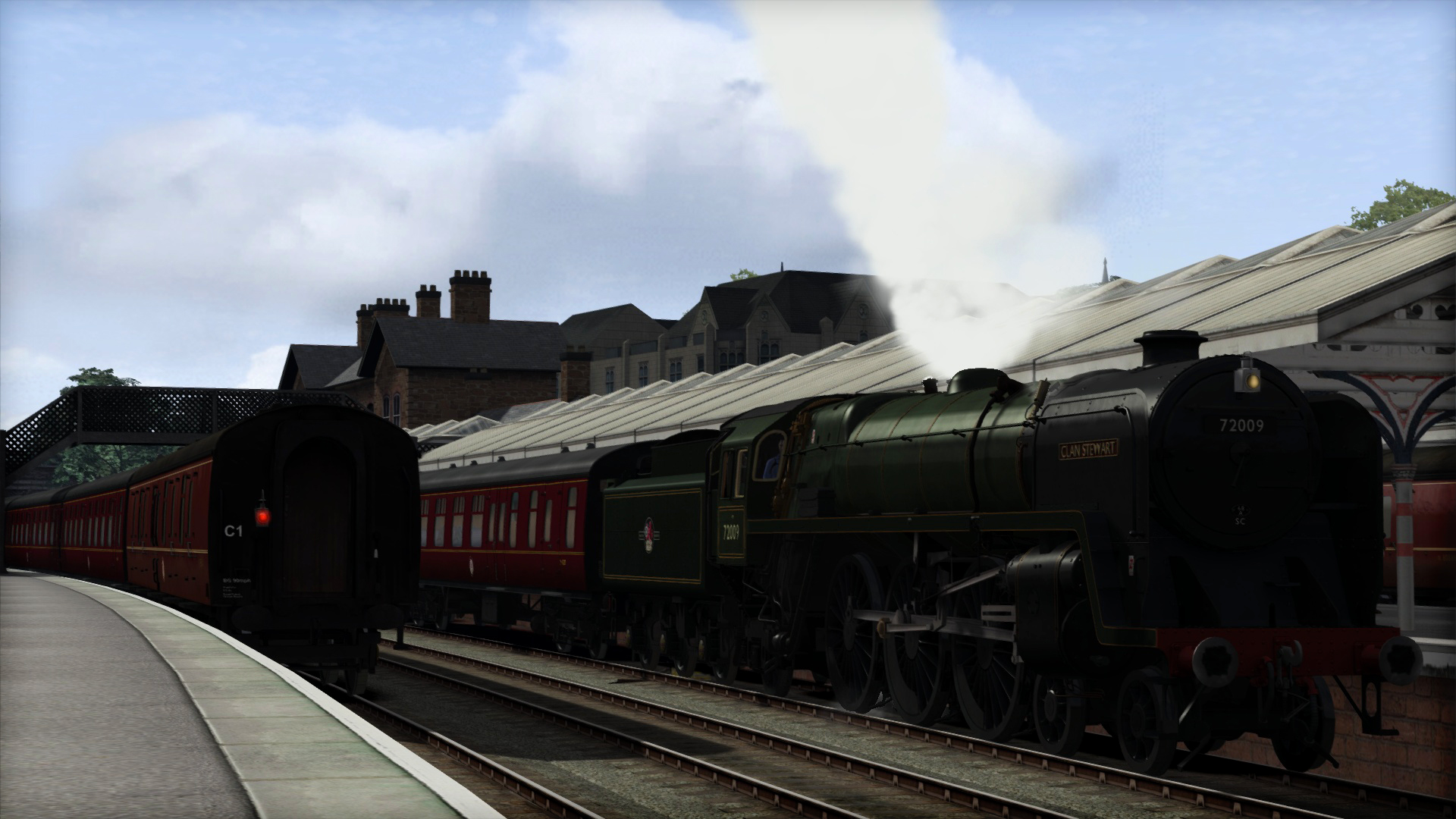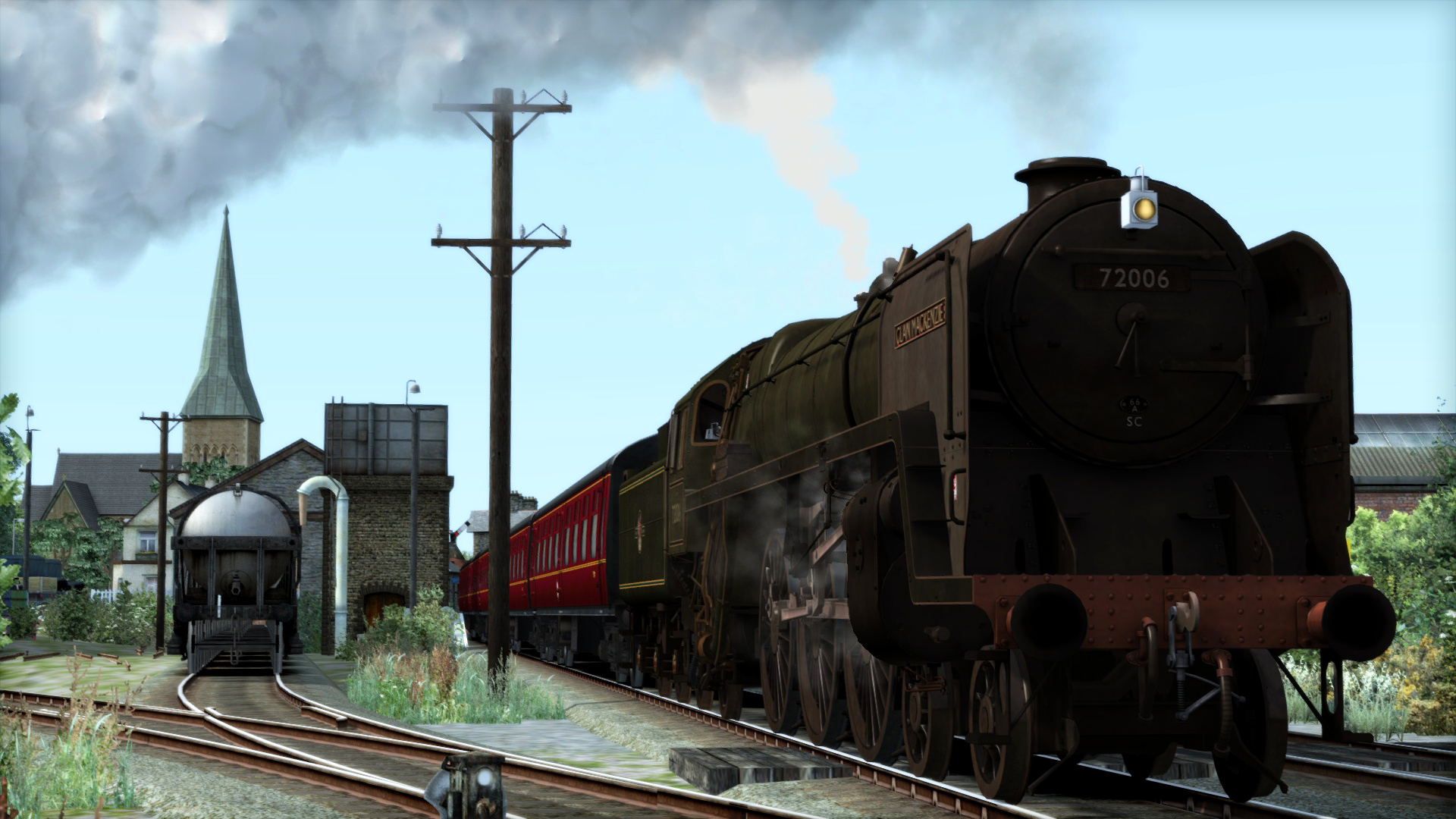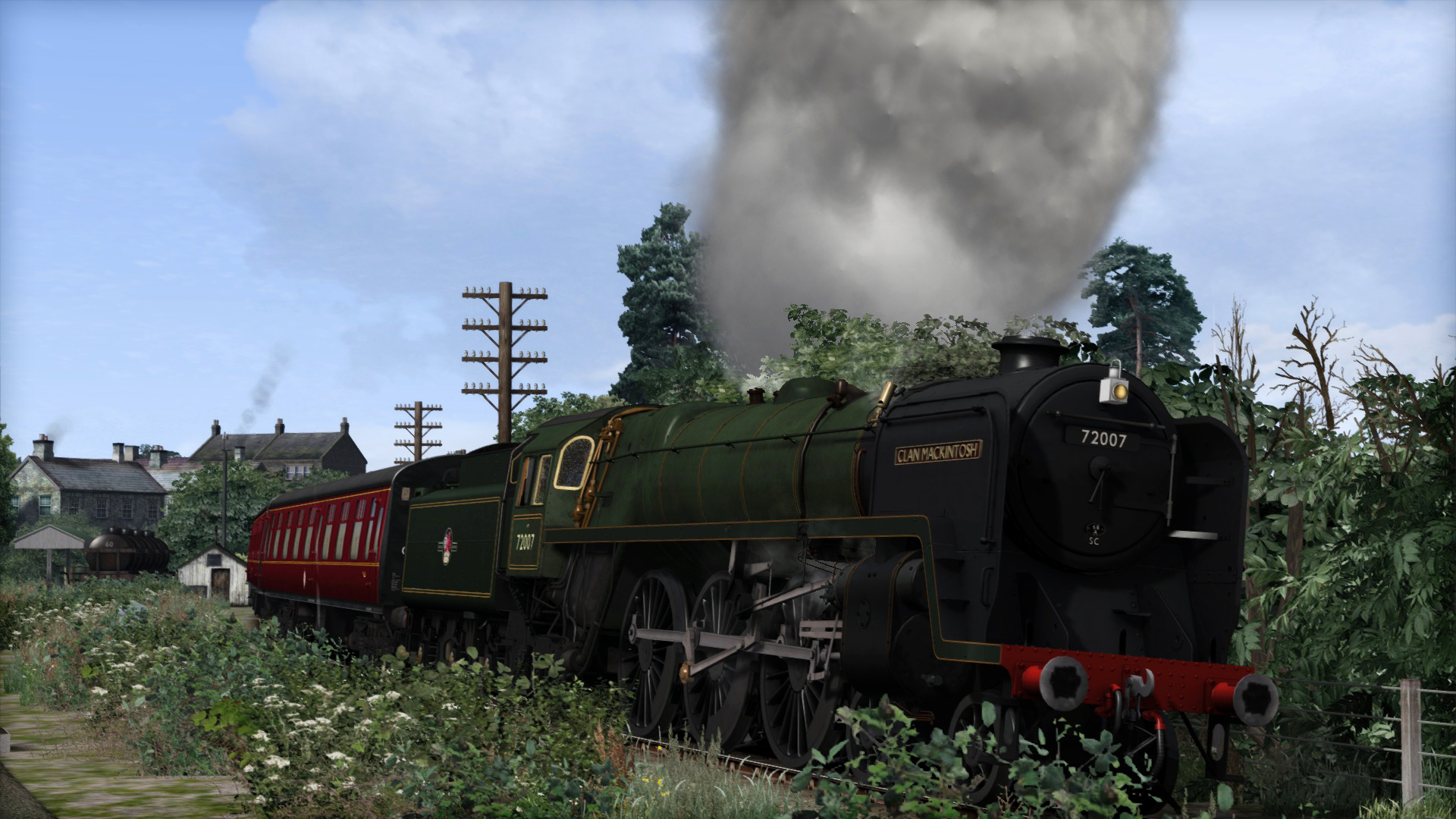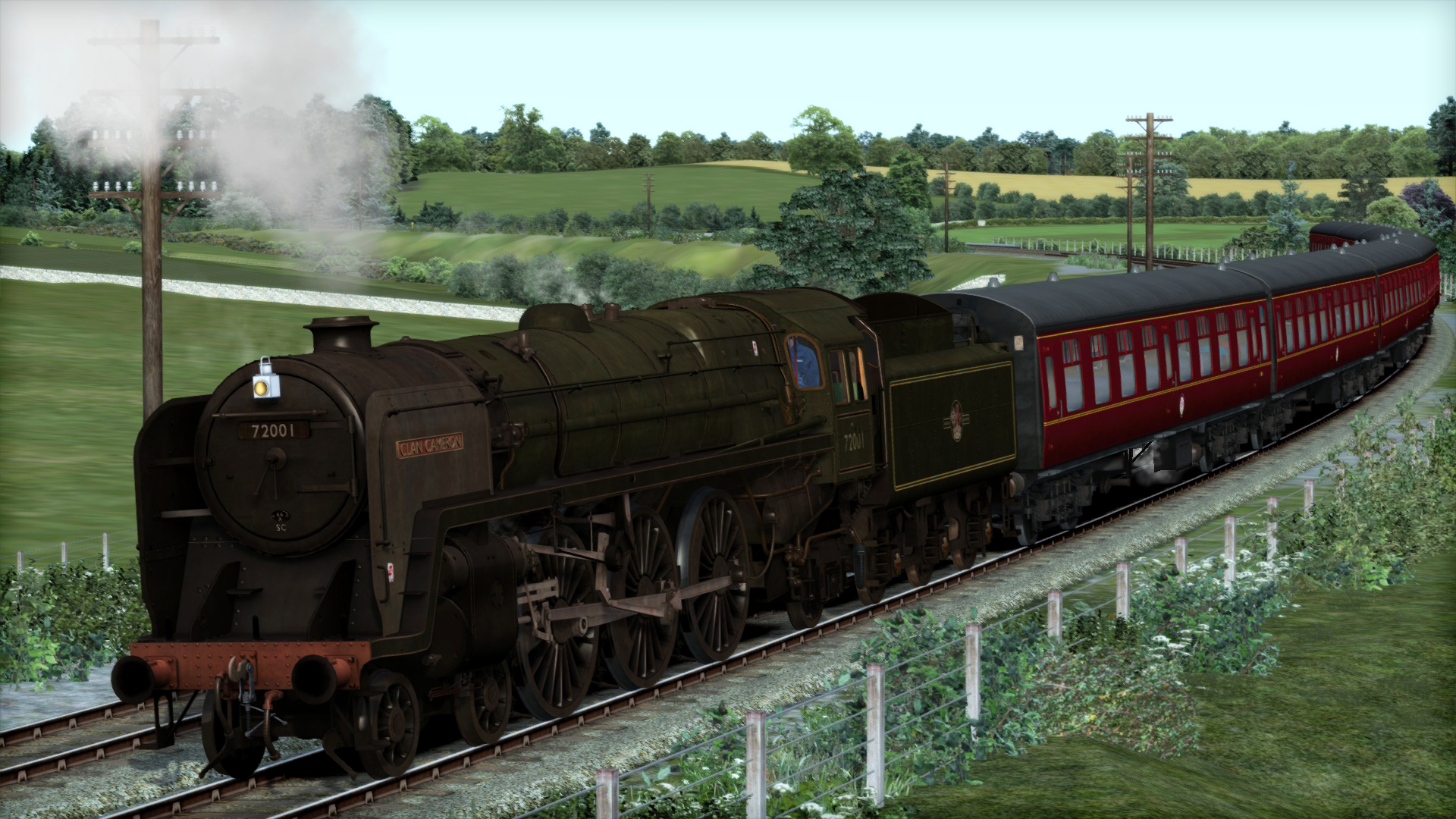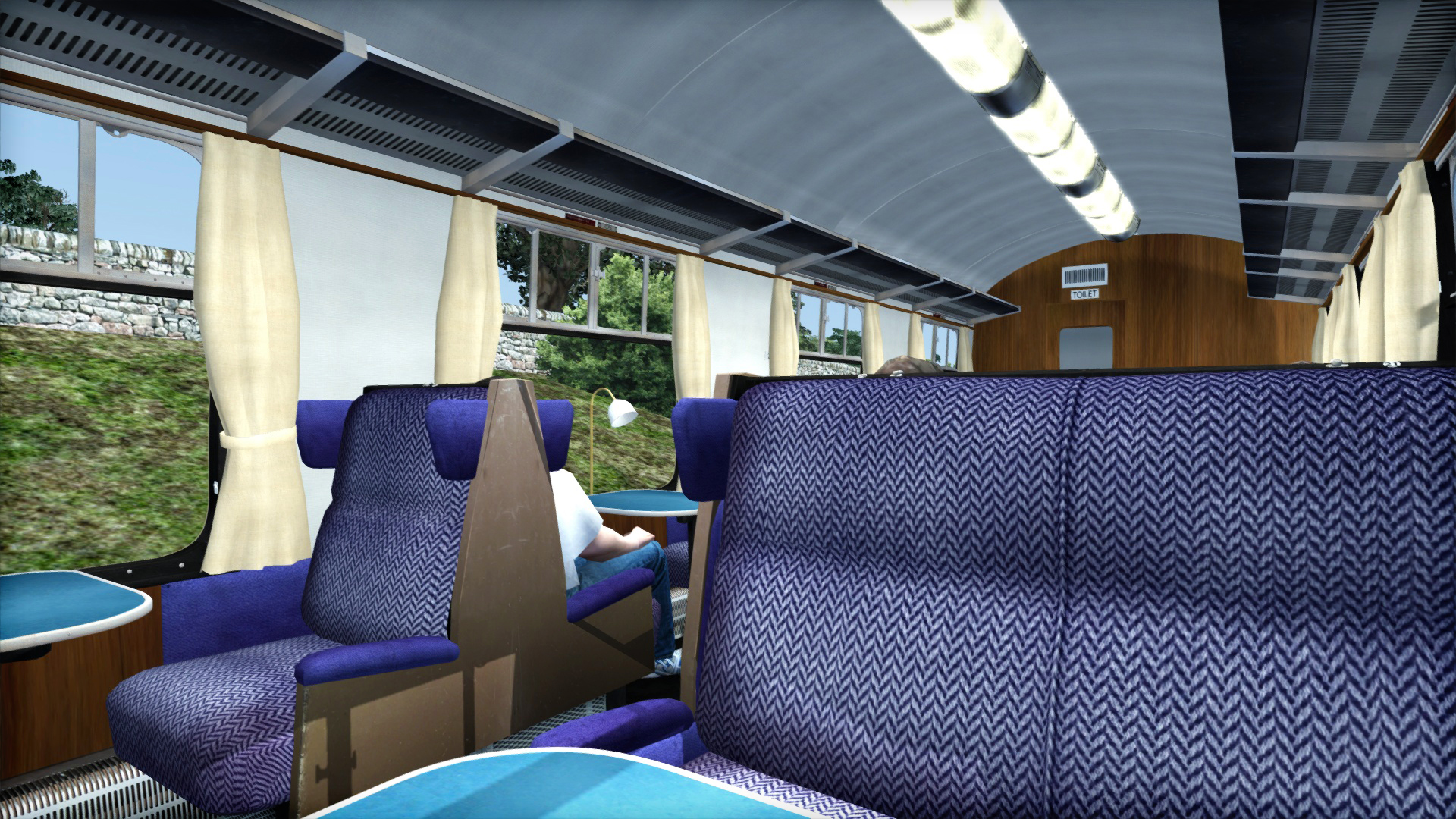Train Simulator: BR Standard Class 6 ‘Clan Class’ Steam Loco Add-On
Recount the bygone era of Pacifics in Scotland, and provide a glimpse into the potential future where 72010 is brought to life in this exquisite Just Trains Pro-Range Add-on for Train Simulator!
Following the nationalisation of Britain’s ‘Big Four’ railway companies into British Railways in 1948, it was decided that many new steam locomotives would be built with a standard design in mind. This practice would ensure common parts were used across a variety of locomotive types, nation-wide, avoiding the significant cost of maintaining older designs that differed greatly from region to region.
Robert Riddles, former apprentice of the LNWR, subsequent Stanier-assistant and Vice-President of the LMS, was appointed ‘Member of the Railway Executive for Mechanical and Electrical Engineering’ of British Railways. Riddles, along with two assistants (both former LMS), were to oversee the design and construction of Britain’s new standard locomotives.
The standard locomotives were to incorporate the best of the ‘Big Four’s successes, however naturally, with three ex-LMS men in charge of constructing the new locomotives, many aspects of the former operator’s designs were present and this became apparent as new traction rolled off the production line. Common features found on the locomotives were high running plates, taper boilers, two cylinders and streamlined cabs. For express operations, the reliable 4-6-2 Pacific design was used.
One such 4-6-2 rolled out of Crewe Works in December 1951. Designated the BR Standard Class 6, or 6MT (Mixed-Traffic), this new locomotive was primarily based on the previous 7MT Britannia Class, and was destined to work in Western Scotland. To be useful ‘up north’, the Standard Class 6 was built with a smaller boiler, increasing the route availability by saving weight. A total of 10 Class 6 locomotives, which were named the Clan Class, were constructed; the last of which was ready in March 1952. More were planned, another 15 in fact, however continuous steel shortages delayed the order, and the publication of the 1955 Modernisation Plan put paid to any hope of seeing more Clans.
The 6MT Clan Class got its naming from a desire to represent Scotland on the rails. Previously, the Highland Railway had its own ‘Clan Class’, which was steadily disappearing after a lengthy working life. Each of the 6MT locomotives, 72000-72009, were named after a Scottish Clan, specifically; Buchanan, Cameron, Campbell, Fraser, MacDonald, MacGregor, MacKenzie, MacKintosh, MacLeod and Stewart, 5 of which were in common with the older Highland locomotives. The aforementioned plan to build extra Clan Class engines already had names in place, 5 of which were not actually ‘Clans’ as they would’ve served the Southern Region if true.
In service, the Clan Class was subject to a mixed reception. Those who were trained to make her steam had little quarrel over performance, the fleet could cope with any duty it was designed for. Many crews out of Carlisle and Glasgow, where the Clans were based, found them trickier to master as the low number of locomotives hindered effective training. Nation-wide trials took place in 1958, and while inherently similar in performance – regardless of location – their utter similarity to the Britannia Class caused confusion. The Clan Class was often booked to operate Class 7 duties, naturally, being pressed into services that required more power resulted in falling behind schedule and, unfortunately, damaged the Clans’ reputation to the point of being deemed a failure.
Despite what management said, and the lack of chance to improve the fleet, those who had the chance to man the Clans were taken by them – when steamed and stoked properly of course. In many regards, the Clans succeeded in fulfilling their duties as a standardised, all-purpose locomotive.
As is the case with all BR Standard Classes, the end of the steam-era saw plenty of locomotives retire long before their operational lives were at a close. The Clans were no exception, with the eldest having survived only 14 years on the rails. Due to only 10 being in service, it did not take long for all the Clans to be scrapped, none survived beyond August 1966.
There is some light at the end of the tunnel for the Clan Class. In recent years, the Standard Steam Locomotive Company have begun work on what would’ve been the 11th locomotive in the class, 72010 Hengist. This loco, when first planned, was one of five bound for the Southern Region and could have lived a rewarding life racing down to the Kent Coast. With any luck, 72010 will one day be reality, resurrecting the Clan Class and becoming the 1000th BR Standard steam locomotive ever built.
The BR Standard Class 6 includes all 10 named members of the 4-6-2 Pacific locomotive, in clean, intermediate and weathered BR Brunswick Green livery and features the standard BR1 tender; also included is the in-production 11th member, 72010 Hengist, complete with modern safety features and modern BR1B tender. First Open, Tourist Standard Open and Brake Standard Open Mk1 coaches are also included in multiple BR liveries.
A selection of career scenarios are included which see you put the BR Standard Class 6 to work on the Western Lines of Scotland route, and a variety of Quick Drive consists will allow you to experience the Class 6 wherever you may choose!
More scenarios are available on Steam Workshop online and in-game. Train Simulator’s Steam Workshop scenarios are free and easy to download, adding many more hours of exciting gameplay. With scenarios being added daily, why don’t you check it out now!
Following the nationalisation of Britain’s ‘Big Four’ railway companies into British Railways in 1948, it was decided that many new steam locomotives would be built with a standard design in mind. This practice would ensure common parts were used across a variety of locomotive types, nation-wide, avoiding the significant cost of maintaining older designs that differed greatly from region to region.
Robert Riddles, former apprentice of the LNWR, subsequent Stanier-assistant and Vice-President of the LMS, was appointed ‘Member of the Railway Executive for Mechanical and Electrical Engineering’ of British Railways. Riddles, along with two assistants (both former LMS), were to oversee the design and construction of Britain’s new standard locomotives.
The standard locomotives were to incorporate the best of the ‘Big Four’s successes, however naturally, with three ex-LMS men in charge of constructing the new locomotives, many aspects of the former operator’s designs were present and this became apparent as new traction rolled off the production line. Common features found on the locomotives were high running plates, taper boilers, two cylinders and streamlined cabs. For express operations, the reliable 4-6-2 Pacific design was used.
One such 4-6-2 rolled out of Crewe Works in December 1951. Designated the BR Standard Class 6, or 6MT (Mixed-Traffic), this new locomotive was primarily based on the previous 7MT Britannia Class, and was destined to work in Western Scotland. To be useful ‘up north’, the Standard Class 6 was built with a smaller boiler, increasing the route availability by saving weight. A total of 10 Class 6 locomotives, which were named the Clan Class, were constructed; the last of which was ready in March 1952. More were planned, another 15 in fact, however continuous steel shortages delayed the order, and the publication of the 1955 Modernisation Plan put paid to any hope of seeing more Clans.
The 6MT Clan Class got its naming from a desire to represent Scotland on the rails. Previously, the Highland Railway had its own ‘Clan Class’, which was steadily disappearing after a lengthy working life. Each of the 6MT locomotives, 72000-72009, were named after a Scottish Clan, specifically; Buchanan, Cameron, Campbell, Fraser, MacDonald, MacGregor, MacKenzie, MacKintosh, MacLeod and Stewart, 5 of which were in common with the older Highland locomotives. The aforementioned plan to build extra Clan Class engines already had names in place, 5 of which were not actually ‘Clans’ as they would’ve served the Southern Region if true.
In service, the Clan Class was subject to a mixed reception. Those who were trained to make her steam had little quarrel over performance, the fleet could cope with any duty it was designed for. Many crews out of Carlisle and Glasgow, where the Clans were based, found them trickier to master as the low number of locomotives hindered effective training. Nation-wide trials took place in 1958, and while inherently similar in performance – regardless of location – their utter similarity to the Britannia Class caused confusion. The Clan Class was often booked to operate Class 7 duties, naturally, being pressed into services that required more power resulted in falling behind schedule and, unfortunately, damaged the Clans’ reputation to the point of being deemed a failure.
Despite what management said, and the lack of chance to improve the fleet, those who had the chance to man the Clans were taken by them – when steamed and stoked properly of course. In many regards, the Clans succeeded in fulfilling their duties as a standardised, all-purpose locomotive.
As is the case with all BR Standard Classes, the end of the steam-era saw plenty of locomotives retire long before their operational lives were at a close. The Clans were no exception, with the eldest having survived only 14 years on the rails. Due to only 10 being in service, it did not take long for all the Clans to be scrapped, none survived beyond August 1966.
There is some light at the end of the tunnel for the Clan Class. In recent years, the Standard Steam Locomotive Company have begun work on what would’ve been the 11th locomotive in the class, 72010 Hengist. This loco, when first planned, was one of five bound for the Southern Region and could have lived a rewarding life racing down to the Kent Coast. With any luck, 72010 will one day be reality, resurrecting the Clan Class and becoming the 1000th BR Standard steam locomotive ever built.
The BR Standard Class 6 includes all 10 named members of the 4-6-2 Pacific locomotive, in clean, intermediate and weathered BR Brunswick Green livery and features the standard BR1 tender; also included is the in-production 11th member, 72010 Hengist, complete with modern safety features and modern BR1B tender. First Open, Tourist Standard Open and Brake Standard Open Mk1 coaches are also included in multiple BR liveries.
A selection of career scenarios are included which see you put the BR Standard Class 6 to work on the Western Lines of Scotland route, and a variety of Quick Drive consists will allow you to experience the Class 6 wherever you may choose!
Included Scenarios
- The Boat Train
- School Special
- Up Thames Clyde Express
More scenarios are available on Steam Workshop online and in-game. Train Simulator’s Steam Workshop scenarios are free and easy to download, adding many more hours of exciting gameplay. With scenarios being added daily, why don’t you check it out now!
Key Features
- All 10 named members of the 4-6-2 Pacific locomotive, in clean, intermediate and weathered BR Brunswick Green livery and features the standard BR1 tender
- Includes the in-production 11th member, 72010 ‘Hengist’ complete with modern safety features and modern BR1B tender
- BR Mk1 Coaches in Maroon & Southern Railways Green Livery (BSO, FO & TSO)
- Extensive Locomotive and Tender Facilities provides a genuine feeling of the real locomotive
- Warm & Hot Mode setup
- Accurate Steam Chest & Superheater Valve Simulation
- Operating Snifting/Anti-Vacuum Valves
- Realistic Regulator, Reverser and Brake Simulation
- Authentic Air Brake, Wheelslip, Wheelskid, Water Gauge levels, Priming and so much more
- Detailed user manual
- 3 engaging scenarios for the Western Lines of Scotland Route (available as a separate purchase)
- Quick Drive compatible
- Download size: 107.3 mb
